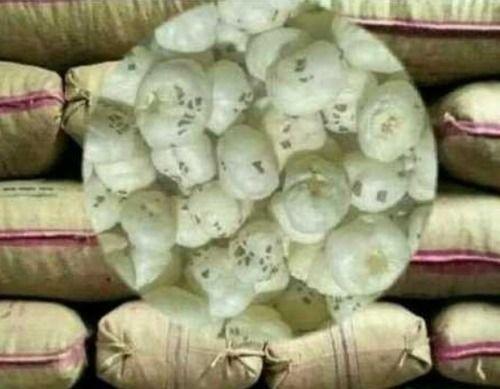Makhana Storage Tips
Makhana plant, commonly known as Fox Nut, might have its roots in South East Asia but its demand extends to the international grounds. Having a high nutritional value along-with a good taste, there has been a high surge in Makhana distribution. It has a strong foothold in South-East Asia and has seen an increase in demand in few states of India, North America, Nepal, Russia, Japan, Korea, Bangladesh. The Indian Market for Makhana distributions includes Bihar, Jammu & Kashmir, Eastern Odisha, it is distributed in West Bengal, Manipur, Tripura, Assam, Uttar Pradesh, Rajasthan, Madhya Pradesh.
With increasing demand, keeping the seeds stored and preserved becomes a priority for the farmers and distributors. Right storage and preservation helps in a structured distribution of Makhana in domestic and international markets.

Market Demand of Makhana
There has been a staggering growth of Makhana demand at a compounded annual growth rate of around 13% since 1998 till 2015. The ready-to-eat snacks and namkeens market is estimated at more than Rs.50,000 crore. The future for the Makhana market looks even brighter with a growth of a CAGR of 25% during 2016-2021.
Key Drivers for Increased Demand
![]() Change in Lifestyle
Change in Lifestyle
A change in lifestyles, eating, buying behaviours of consumers have led to a sudden increase in demand for Makhana in Urban markets. Consumers with high disposable income have become more fitness conscious and are looking for healthier options. This has led to a steep rise in the popularity of the products.
![]() High Consumerism
High Consumerism
Other growth drivers of market demand can be attributed to high consumerism backed by strong marketing, product innovation, competitive pricing. Consumers have many options at an affordable price. Snack food category includes of ready to eat snacks like chips, namkeen etc. Their market already have expanded over the years. The demand has grown almost six fold over the decades giving a huge pump to the industry.
The scenario in International markets especially in developed countries is very impressive. A huge demand in western countries like U.S.A., Europe, Australia has led to a sudden expansion for Makhana market. However, still there is a huge potential in the untapped markets both in domestic and international space. Marketing, awareness, nutritional value are the key drivers for tapping the true market potential.
![]() Usage of Makhana Seeds
Usage of Makhana Seeds
In India and China, Makhana seeds are used for preparation of various medicines. Hence, high demand of Makhana seeds in these countries. The Makhana seeds are very useful for making Ayurvedic medicines consumed as aphrodisiacs. Apart from being a tasty snack and used for medicines, Makhana is used for starch for fabrics and the waste material from the bran is used for feeding the poultry.
![]() Storage of Makhana Seeds
Storage of Makhana Seeds
Makhana has a high demand in the domestic and international markets. They are supplied in many forms, Makhana pops or seeds etc. The biggest benefits in transporting the makhana seeds to the trading markets is that due to extreme sunlight exposure, the makhana seeds lose its moisture up to around 31 percent which helps in increasing the longevity of the seeds.
Due to this, it becomes very easy to store the makhana seeds can be preserved and stored for almost a month long period. Even though the seeds can be stored for a month but its becomes essential to keep on sprinkling water on them to ensure freshness.
Following the traditional way of preserving, Makhana seeds are preserved by using cylindrical bamboo sticks. Thereafter, cow dung is used for covering them. A coarse cotton cloth is also used as a covering and it helps in maintaining the right temperature.
Preservation of seeds is not the only concern for the farmers. The Makhana leaves too are protected from the fungal leaf blight disease. Pytolam Spray helps in keeping away the disease. Another serious threat while storage are the storage insects like mites due to which there is a substantial decline in the quality of the stored raw material and the pop. This could lead to a production loss of almost 80-90 %.
![]() Storage of Makhana Pops
Storage of Makhana Pops
Unlike Makhana seeds, Makhana pop have a longer shelf life if stored properly. Under the right conditions and preservation, Makhana pops can be stored to a period of 1 year. Jute bags are commonly used for storing Makhana pops of 10-15 kg each. Protecting them from moisture is a very important step. For this, wooden platforms are used properly to ensure moisture does not seep in.
It is the responsibility of the farmers to store and preserve Makhana pops in their houses as they do not have any proper storage space. Once, they sell it wholesalers, Makhana Pops are carefully handed over to the wholesalers. 5 to 10 % of the stored Makhana pops get wasted due to rat and rodents attack. Need for adequate cash leads to a low retention capacity at grower level.
The farmers sell all the Makhana pops at the earliest to local cluster of wholesalers. The wholesalers store the pops and have an increased margin by selling them in the off season making it a profitable venture for them. The local wholesalers take proper care in storing and preserving Makhana pops by packing in the right manner. After grading, wholesalers use polythene bags to pack the produce. After packing in polythene, they are further packed in jute bags making them fully protected. Quantity of Makhana that can be accommodated in a standard gunny bag is decided after accessing the quality of Makhana.
Once the Makhana pops are properly packed, they are stored in the godowns that are owned and operated by the wholesalers. The storage capacity of the godowns depends upon the trader’s ability to handle. Stored under right conditions, wholesalers anticipate future gains due to surged pricing of Makhana in off season.
Challenges faced in storage of Makhana pops

There are many challenges that are faced by the farmers cultivating Makhana.
![]() They do not have the storage capacity for keeping Makhana.
They do not have the storage capacity for keeping Makhana.
![]() Adding to their problem is a lack of availability of credit.
Adding to their problem is a lack of availability of credit.
![]() These two combined, farmers are under immense pressure to find some better storage solutions.
These two combined, farmers are under immense pressure to find some better storage solutions.
The problems are not just limited to the farmers, even the local wholesalers have their share of challenges. Expecting a good profits, the wholesalers store Makhana for further distribution. However, the picture is different as they incur losses due to wastage, security, labour cost etc. making it a unprofitable proposition.
Solution for Proper Storage
With proper loan facility backed by a provision of storage facilities to farmers can help in easing out the distress of farmers and wholesalers. Help in provision of proper storage go-downs in each centre for Makhana can lead to proper storage and preservation of Makhana. Nationalised Banks can help the farmers and wholesalers by lending loans will help in making the distribution and supply chain seamless. The underlying problems need to be addressed by both the Central and State Governments that could help in strengthening the manpower and infrastructure.